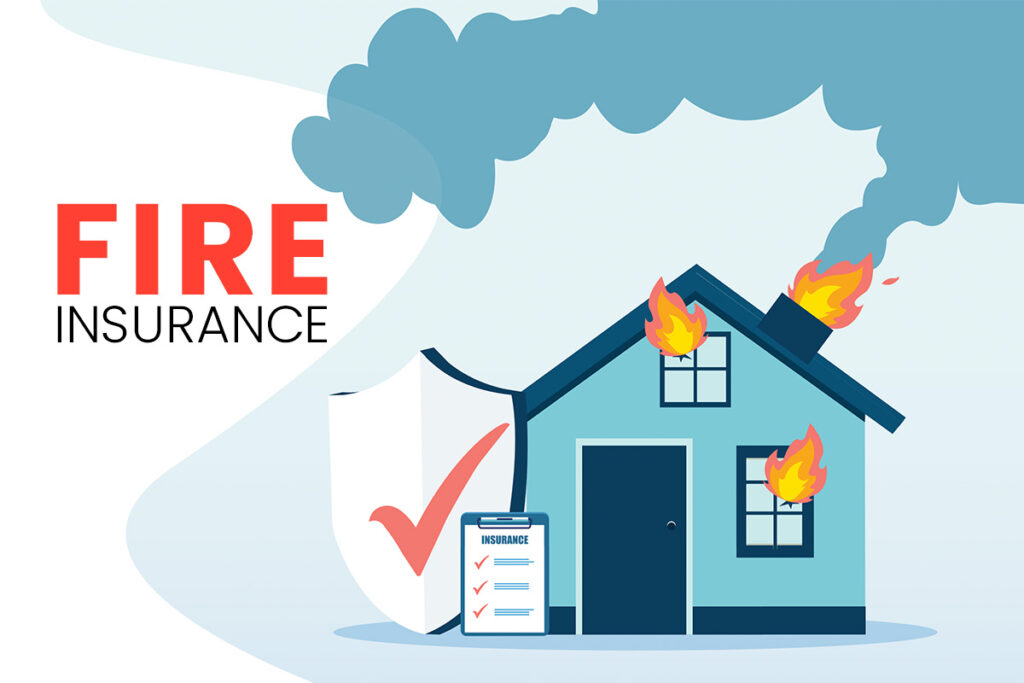
Fire insurance is a form of property insurance that covers damage and losses caused by fire. Most policies come with some form of fire protection, but homeowners may be able to purchase additional coverage in case their property is lost or damaged because of fire.
Purchasing additional fire coverage helps to cover the cost of replacement, repair, or reconstruction of property above the limit set by the property insurance policy. Fire insurance policies typically contain general exclusions such as war, nuclear risks, and similar perils. Damage caused by a fire set deliberately is also typically not covered.
NOTE:
- Fire insurance is property insurance that covers losses or damage to a structure damaged or destroyed in a fire.
- Fire insurance in a standard homeowners policy may be capped at a rate that is less than the cost of the losses accrued.
- Fire insurance can pay the policyholder on either a replacement-cost basis or an actual cash value (ACV) basis for damages.
- Although many homeowners insurance policies include fire coverage, some homeowners may want more coverage.
How Fire Insurance Works
A standard homeowners insurance policy usually includes fire insurance. Homeowners insurance provides policyholders with coverage against loss and/or damage to their homes and possessions, also referred to as insured property. Insured property includes both the interior and exterior of the home as well as any assets that are kept on the property.
Policies may also cover injuries that someone sustains while on the property. If you have a mortgage, there’s a very good chance that your lender will require that you have homeowners insurance before you will be approved for a loan. Even if it isn’t a requirement, a homeowners insurance policy can offer beneficial protection.
You can also purchase fire insurance as a stand-alone policy. It covers a policyholder against fire loss or damage from a number of sources. This includes fires caused by electricity, such as faulty wiring and gas explosions, as well as those caused by lightning and natural disasters. A burst and overflowing water tank or pipes may also be covered by the policy.
Example of Fire Insurance
Most policies provide coverage regardless of whether the fire originates from inside or outside of the home. The limit of coverage depends on the cause of the fire. The policy reimburses the policyholder on either a replacement-cost basis or an actual cash value (ACV) basis for damages.
If the home is considered a total loss, the insurance company may reimburse the home’s current market value. The insurance typically provides a market value compensation for lost possessions, with the total payout capped based on the home’s overall value.
For example, if a policy insures a house for $350,000, the contents are usually covered for at least 50% to 70% of the policy value—or a range of $175,000 to $245,000. Many policies limit how much reimbursement covers luxury items such as paintings, jewelry, gold, and fur coats.
Special Considerations
A policyholder should check their home’s value each year to determine if they need to increase their coverage amount. Keep in mind that you cannot get insurance for more than a home’s actual value. Insurance companies may offer stand-alone policies for rare, expensive, and irreplaceable items that are otherwise not covered in standard fire insurance.
Many standard homeowners insurance policies include coverage for fire, including providing for costs related to repairing your home and even additional expenses such as for relocation.
In some cases, you may want more extensive coverage. If an insurance policy excludes coverage for fire damage, a homeowner may need to purchase separate fire insurance—especially if the property contains valuable items that cannot be covered with standard coverage. The insurance company’s liability is limited by the policy value and not by the extent of damage or loss sustained by the property owner.
Fire insurance policies provide payment for the loss of use of the property as a result of a fire. They also often provide additional living expenses if the fire caused uninhabitable conditions. Finally, they provide for damage to personal property and nearby structures. Homeowners should document the property and its contents to simplify the assessment of items damaged or lost in the event of a fire.
A fire insurance policy includes additional coverage against smoke or water damage due to a fire and is usually effective for one year. Fire insurance policies on the verge of expiration are usually renewable by the homeowner under the same terms as the original policy.
Is fire insurance different from homeowners insurance?
Fire insurance provides coverage for costs related to a fire, whereas homeowners insurance protects against many other types of risks. A homeowners insurance policy typically includes coverage for damage caused by a fire, but a stand-alone fire insurance policy may provide more extensive coverage.
What is not covered in fire insurance?
A fire insurance policy will not cover losses related to fires set deliberately. Fire insurance also only covers losses related to a fire, so if your property suffers loss or damage from another cause, it would not be covered.
What type of property is covered by fire insurance?
Typically, any fire damage to your home or its contents will be covered by fire insurance. This includes property covered by candle fires, grease fires, electrical fires, and others.
The Bottom Line
For many homeowners, protection provided by a standard homeowners insurance policy will be enough to cover losses related to fires, including losses to the home structure or personal property. Consider consulting a financial advisor to see if a stand-alone fire insurance policy may be useful for your situation.







